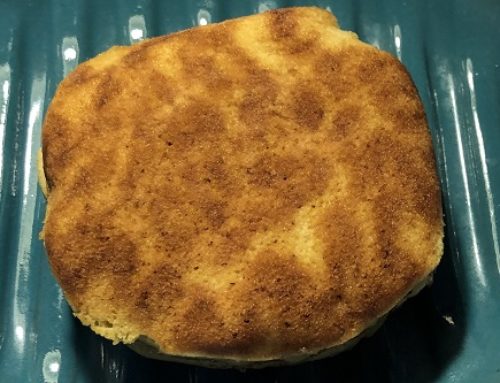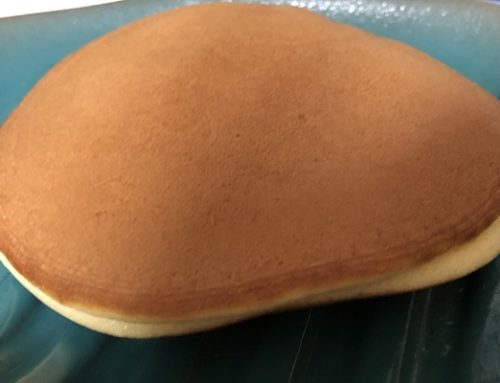Soba noodles restaurant Sōhonke Sarashina Horii bears traditional brand name “Sarashina”. Sarashina is one of the three big brand of soba noodles restaurants in Tokyo. The other two are Sunaba and Yabu.
Background of Sarashina Horii
Three “Sarashina” soba noodles retaurants at Azabu
There are three soba noodles restaurants at Azabu that bears brand name “Sarashina”. They are “Sōhonke Sarashina Horii”, “Nagasaka Sarashina Nunoya Tahe-e”, and “Azabu Nagasaka Sarashina-honten”. They have different background.
In 1780 (Edo period). NUNOYA (later HORII), Tahe-e established soba noodles restaurant “Shinshū Sarashina Soba-dokoro Nunoya Tahe-e” at Azabu. Among three above soba restaurants, Sōhonke Sarashina Horii is legitimate descendant from the point of view of bloodline. Then why are there three “Sarashina” soba noodles restaurants at Azabu?
The reason for three “Sarashina” soba noodles restaurant at Azabu
From Edo period, Tabe-e’s Sarashina soba restaurant was classy restaurant. And in Meiji period it became quite renowned successful soba restaurant. From Meiji period, Azabu Nagasaka Sarashina Nunoya Tahe-e did “Noren-wake” and as a result, several soba stores that have “Nunoya” or “Sarashina” in store’s name were established other regions of Tokyo. They constituted “Sarashina” clan.
Azabu Nagasaka Sarashina-honten
As for Azabu Nagasaka Sarashina Nunoya Tahe-e, in 1941 it went out of business when 7th Matsunosuke Horii was the owner. Several years later he permitted Shigetarō Kobayashi to use brand name “Nagasaka Sarshina” and handed over the agreement document to him. Accordingly Shigetarō Kobayashi opened soba restaurant “Azabu Nagasaka Sarashina-honten” at Azabu in 1948.
Nagasaka Sarashina Nunoya Tahe-e
Shocked by the opening of “Azabu Nagasaka Sarashina-honten” that does not have any relationship with “Sarashina” clan, volunteers of shopkeepers at Azabujūban began the movement for reopening of “Azabu Nagasaka Sarashina Nunoya Tahe-e” and the central figure of this movement was Isamu Kobayashi. Though Kobayahsi called for investment, no “Sarashina” clan invested in the reopening of the restaurant. So, Kobayashi invested heavily and the limited partnership company “Azabu Nagasaka Sarashina Sōhonten” was established in 1949. And it opened soba restaurant at Azabu. The company registered the trademark “Nagasaka Sarashina”.
At Azabu Nagasaka Sarashina Sōhonten, 7th Matsunosuke Horii prepared soba. Later Isamu Kobayashi established another limited partnership company “Azabu Nagasaka Sarashina kobayashi Isamu”. Ryōzō Horii, son of Matsunosuke Horii, got a job at Azabu Nagasaka Sarashina Sōhonten in 1960. In 1961, Isamu Kobayashi integrated two limited partnership companies into “Nagasaka Sarashina Nunoya Tahe-e” Co., Ltd. New company registered trademark “Nunoya Tahe-e”.
By the way, “Nagasaka Sarashina Nunoya Tahe-e” sued “Azabu Nagasaka Sarashina-honten” for use of “Nagasaka Sarashina” but it reached a settlement.
Sōhonke Sarashina Horii
Though Ryōzō Horii the 8th had worked for “Nagasaka Sarashina Nunoya Tahe-e”, he quit the company and opened his soba restaurant “Sōhonke Sarashina Horii” at Azabu in 1984. As “Nagasaka Sarashina” and “Nunoya Tahe-e” are registered trademark, he couldn’t use these trademarks in his restaurant’s name.

Sōhonke Sarashina Horii
Sōhonke Sarashina Horii is on the first floor of Condo.
Fundamental information on Sōhonke Sarashina Horii
Fundamental information on Sōhonke Sarashina Horii is as follows.
Address: 3-11-4 Motoazabu Minato-ku, Tokyo
Opens: 11:30 – 20:30 (Sat.. Sun.. holidays: 11:00 – 20:30)
Closes: Wednesday
It’s about 5 minutes walk from Exit 7 or 5 of subway station Azabujūban of Toei Ōedo line, about 7 minutes walk from Exit 4 of subway station Azabujūban of Nanboku line of Tokyo metro.
It has two branch restaurants at Tachikawa (in Isetan department store Tachikawa) and at Nihonbashi (in Takashimaya department store Nihonbashi).
During lunchtime and dinnertime you may have to wait, except those hours it may be not so crowded.
It has English menu with pictures and it seems most employees can take order in English. Employees seem to be used to serving visitors from abroad.
Soba noodles served
Four kinds of soba noodles
Sōhonke Sarashina Horii mills soba (buckwheat) seeds in-house. It makes soba noodles by hand.
Basically Sarashina Horii serves four kinds of soba noodles. They are Sarashina soba, Mori-soba, Futouchi soba and Seasonal special soba.
Sarashina soba
Sarashina soba is made from Sarashina flour. And Sarashina flour is composed of milled powder of innermost part of soba (buckwheat) seeds and is white. As a result, the color of Sarashina soba noodles is white. Sarashina soba noodles are thin. Sarashina Horii serves Sarashina soba with a little bit sweet dipping sauce.
Mori-soba
Sarashina Horii’s Mori-soba uses the standard second soba flour. So, its color is light brown. We can taste basic flavor and scent of soba with this Mori-soba. Noddles are thin.
Futouchi soba
Soba flour for Futouchi soba is made by adding the third flour that includes powder from harder part of soba seeds. Sarashina Horii makes thick noodles using this flour.
Seasonal special soba
Base of seasonal special soba is Sarashina flour and Sarashina Horii adds seasonal ingredients to this flour. Examples of seasonal ingredients are Yuzu, Yomogi (Japanese mugwort) etc. So, the color of soba noodles different depending on the ingredients added.
Trying Sarashina soba noodles
When I ordered Sarashina soba noodles, an employee first brought dipping sauce.

Dipping sauce for Sarashina soba noodles
Dipping sauce for Sarashina soba is in the black bottle on upper left of the picture. It is a little bit sweet.

Sarashina soba noodles
As you see in the above picture, the color of Sarashina soba noodles is white. Noddles are thin. I felt Sarashina soba lacked flavor. Refreshing but a little watery. My preference is ordinary Mori-soba. Price of Sarashina soba is 930 yen.
Trying Ten-mori-soba
I tried Small prawn Ten-mori-soba to compare with Ten-zaru-soba of Namiki Yabu-soba at Asakusa.

Small prawn Ten-mori-soba
As you see in above picture, the color of Mori-soba is light brown that is same with that of ordinal other soba restaurant. Dipping sauce for Mori-soba is a little bit salty which is different from the sauce for Sarashina soba. Noodles of Mori-soba are thin. I think noodles are a little harder and texture of noodles seems a little coarse.
Tempura at Namiki Yabu-soba was light and crispy but that at Sarashina Horii is not. Small pawns at Sarashina Horii lack “Umami”.
Price of Small prawn Ten-mori-soba is 1,930 yen. I think it does not have value for that price. By the way, plain Mori-soba’s price is 830 yen.
Japanese rolled omelette
Some groups of the customers at Sarashina Horii eat and drink besides soba noodles. So, tried Japanese rolled omelette. Its price is 740 yen.

Japanese rolled omelette
Dark brown lump on lower part of the dish is grated radish. Japanese rolled omelette was hot when an employee brought the dish. I think it taste good. Grated radish has a bit strong taste of soy sauce.
My evaluation
On the whole, soba noodles at Sarashina Horii are not bad but not exceptional. Tempura is not good. You better order simple Mori-soba or Sarashina soba. Japanese rolled omelette is good. Sarashina Horii is a little pricey for soba noodles restaurant.






Leave A Comment